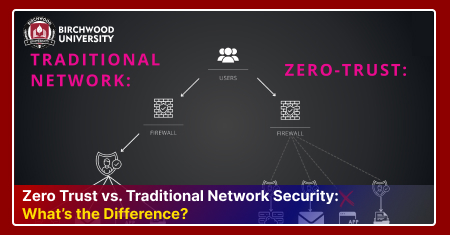What is the difference between AI and generative AI?
Aug 11, 2025Artificial Intelligence (AI) has become integral part of almost every sector, from healthcare to entertainment and sports industry. However, within the vast universe of AI, there exists a niche area that has garnered significant attention in recent years i.e. Generative AI (Gen AI). Today, many individuals are aware of AI to some extent. But what exactly is Gen AI and how does it fit into this broader picture?
In this article, we will deconstruct the differences, uses and practical applications of AI compared to Generative AI. We will try to shed light on the ways in which they function, their challenges and how they are transforming markets across the globe.
What is Artificial Intelligence (AI)?
Artificial Intelligence (AI) is the ability of machines to do tasks that typically requires human intelligence. Such tasks include pattern recognition, decision-making, learning from experience and problem-solving. The most important thing about AI is that it is programmed to accomplish specific tasks but not to create new, original content.
AI functions by learning from vast quantities of data and making decisions or predictions through algorithms. You can find AI being used in a multitude of ways such as for:
Forecasting customer behavior in business
Automating tasks such as email filtering or scheduling
Facial recognition in security systems
Autonomous car driving
One popular example of AI is Google Assistant or Siri, which use natural language processing (NLP) to interpret human speech and respond to queries. Another is Amazon's recommendation engine, which offers product suggestions according to your browsing history. These are instances of AI accomplishing activities that replicate human decision processes, but in a very limited, specialized manner.
Read also -What is the Difference between Generative AI and Agentic AI?
What is Generative AI?
Generative AI is a niche branch of AI that deals with the power of machines to create new content. This can be producing text, images, audio and even video. As opposed to typical AI that utilizes data to make predictions or decisions, Generative AI work upon data to build something novel. It is a form of machine learning, usually based on deep learning models and algorithms such as Generative Adversarial Networks (GANs) or Transformers.
What makes Generative AI unique is its ability to be creative. Instead of processing information in order to make prediction or forecasting, applies that data to construct something new and inventive. It could be generating an image based on a textual description or writing a poem in the style of Shakespeare. Generative AI can be used in:
Image creation: Models like DALL E can create images from given prompts.
Text creation: GPT-3 (the platform powering ChatGPT) and similar tools can create essays, stories or even code.
Music composition: AI software such as Jukedeck composes new music based on a given mood or genre.
Synthesis of videos: Runway ML enables the generation of video content by AI, including deepfake technology or special video effects.
Gen AI doesn't just replicate; it copies established patterns and creates novel results, making it highly useful for industries such as content creation, entertainment, marketing and artistic endeavors.
Highlights of important differences between AI and Gen AI:
Read also -Creative Applications of Generative AI: The Power of Smart Prompt Engineering
How AI and Generative Models Learn: From Data to Intelligent Creation?
How AI Learns?
Artificial Intelligence (AI)
Artificial intelligence (AI), in general sense, works on either labeled (supervised learning) or unlabeled (unsupervised learning) data. For instance, an AI system used to identify fraud transactions would learn from past information on transactions, which are either labeled as fraudulent or legitimate. It then predicts whether new transactions are likely to be fraudulent or not.
How Generative AI Learns?
Generative AI, especially GANs, function by employing two neural networks: the generator and the discriminator. The generator produces new data whereas the discriminator determines if the generated data appears real or fake. With time, the generator gets better at producing data that the discriminator cannot easily distinguish from real data.
GPT-3, which is the model powering ChatGPT, has a transformer-based architecture. It processes a huge quantity of text data and applies that to forecast and predict the next word of a sentence, thus resulting in human-like responses.
Read also -How Generative AI in Advertising is Transforming the Media Industry?
AI vs. Generative AI: Practical Applications
Let’s break down some practical, real-world applications of both AI and Generative AI across various industries.
Example: In the healthcare sector, AI is involved in identifying diseases such as cancer by inspecting medical images like X-rays. AI is trained on patterns in the images and makes predictions based of that data. Generative AI in healthcare can create synthetic medical data, which is particularly helpful in instances where privacy concerns prevent the use of actual patient data for research.
In entertainment industry, AI is helping Netflix recommend movies based on your viewing history. However, Generative AI takes it a step further. Tools like DeepArt can create completely new works of art based on an existing style, while AIVA (Artificial Intelligence Virtual Artist) composes original music tracks.
Challenges and Limitations of AI and Generative AI
While both AI and Generative AI are revolutionary technologies, they come with their own sets of challenges.
Some Notable Examples:
Facial recognition technology has been accused of being inaccurate, particularly in identifying members of minority groups. A good example is the case of Amazon's Rekognition system, which did much worse at identifying women and Individuals of darker complexion.
Generative AI, however, has a challenge in the form of deepfakes—images or videos manipulated to look real. Though they can be employed for artistic purposes, they can be misused for malicious activities such as spreading misinformation or generating fake or fabricated news.
Future Perspectives on AI and Generative AI
Potential of AI as well as Generative AI in the future is immense. As AI goes through development, we can expect to witness:
More personalized experiences: AI will provide increasingly personalized services, ranging from healthcare treatment to education and entertainment.
Smarter business practices: AI will become an integral instrument in sectors from logistics to banking, assisting with automating operations and making more intelligent choices.
In regards to Generative AI, it will:
Revolutionize creativity: AI will revolutionize the way we make music, paintings, books and video. We are already witnessing AI-generated content going mainstream be it generating fresh scripts for movies to AI led news reporting.
Improve interactive storytelling: Generative AI will enable richer storytelling, for example, individualized video games or interactive movies where the narrative is adapted to user decisions.
Both of these technologies will probably overlap in numerous fields and become even more effective tools. For instance, Generative AI might be used in conjunction with AI systems to not only analyze data but also create actionable information from it.
Read also -What are the opportunities and challenges for AI in education?
Conclusion
AI and Generative AI are transforming industries—solving issues, automating and generating fresh content. As they mature, their influence will run deeper, presenting both challenges and transformative opportunities in sectors such as healthcare, finance and entertainment.






